Gross profit, also sometimes referred to as gross income, is revenue minus cost of goods sold (COGS). It corresponds to the income the company makes after having deducted all the costs associated with making its products or providing its services. Gross profit appears on the company's income statement. It shows insights into the efficiency of a company in managing its production costs, such as labor and supplies, in order to generate income from the sales of its goods and services. Gross profit is calculated by subtracting COGS from revenue. Depending on the company, revenue may also be called “sales revenue” or “sales.” Revenue is the total value of income generated from sales for a particular period. It is sometimes listed as net sales since it may exclude discounts and deductions from returned or damaged goods. Sales revenue provides insights into how much money you are bringing in from your total sales. It is also known as the "top line" because it appears at the top of the income statement. Net sales tell more about the financial health of a business than total sales. An income statement that only includes gross sales is often misleading because gross sales do not detail the incurred expenses of sales. COGS, also referred to as “cost of revenue” or "cost of sales", refers to the direct costs involved in creating a product. It typically includes direct material cost, direct labor cost, and direct factory overhead. COGS, as used in the gross profit calculation, mainly includes variable costs, which are the costs that fluctuate depending on the output of production. Examples include raw materials, piece-rate labor, and freight-in costs. It does not include fixed costs, which are expenses that do not change based on production levels. Fixed costs might include rent of production building, advertising, and office supplies. However, a portion of the fixed costs may be assigned under absorption costing, which is needed for external reporting in the generally accepted accounting principles (GAAP). For instance, a shoe manufacturer produced 10,000 shoes in one quarter, and the company paid $10,000 in rent for the building. Under absorption costing, $1 in cost would be assigned to each shoe produced. For example, let us consider Tesla’s gross profit reported in their consolidated statement of operations for the quarter ending on September 30, 2021. In this example, Tesla has a total of $13,757,000 of revenue. The total COGS (cost of revenues) amounts to $10,097,000. Subtracting $10,097,000 from $13,757,000 yields a gross profit for the company of $3,660,000. Gross Profit = $13,757M - $10,097M = $3,660M Gross profit assesses how efficiently a business uses labor and supplies to manufacture goods or offer clients services. It can also help businesses assess whether there is a need for a price increase and/or cost-cutting. If gross profit is too low, it might be necessary to either increase prices or find ways to reduce costs. Reducing costs can be difficult, but it is important to find ways to do so if the business wants to stay afloat. Gross profit also allows you to understand the costs needed to generate revenue. When the value of COGS increases, the gross profit value decreases, so you have less money to deal with your operating expenses. When the value of COGS decreases, this means an increase in profit, implying that you will have more money to spend on your business operations. Because the expenses that factor into gross profit are inevitable expenses, investors consider gross profit a measure of a company’s overall ability to generate profit. Gross profit can also be used to calculate the gross profit margin. This metric helps compare a company's production efficiency over time. It also assesses the financial health of the company by calculating the amount of money left over from product sales after subtracting COGS. Gross profit margin is often expressed as a percentage of sales, while gross profit is expressed as a currency value. The formula for gross profit margin is: While gross profit describes the top line earnings of a company and is achieved by subtracting COGS from the revenue, gross profit margin takes that figure of gross profit, divides it by the revenue and multiplies the result by 100 to generate a percentage basis. Using the earlier example, Tesla reported a total revenue of $13,757,000 and a COGS of $10,097,000. The gross profit margin here is: [(13.757M - 10.097M) / 13.757M] x 100 = 27% This means that Tesla covered their COGS with 73% of revenue and had 27% left for other expenses, like fixed costs, taxes, and depreciation. In other words, for every dollar Tesla, Inc. generated in sales, the company earned 27 cents in gross profit when compared to their COGS. Gross profit is different from net income, also known as net profit. They have different calculations and have entirely different purposes for determining how a company is doing. Net income is also referred to as "the bottom line" because it appears at the end of an income statement. It includes all the costs and expenses that a company incurred, which are subtracted from revenue. Expenses that factor into the net income are COGS, operating expenses, depreciation and amortization, interest, taxes, and all other expenses. Other income sources are also included in net income. For instance, a company may invest their cash in short-term investments, which is also a form of income. Proceeds from the sale of equipment that are no longer used for profit are also considered income. Using Tesla as an example, the company generated a gross profit of $3,660,000 and had the following expenses and other income: Tesla’s net income for its quarter ending on September 30, 2021 is $1,659,000 after deducting operating expenses and other expenses from its gross profit. The purpose of net income and gross profit are entirely different in terms of determining the success of the company. Gross profit assesses the ability of the company to earn a profit while simultaneously managing its production and labor costs. Thus, it is a valuable metric in determining the reason why a company's profits are increasing or decreasing by looking at production costs, sales, labor costs, and productivity. However, using gross profit to determine overall profitability would be incomplete since it does not include all other costs involved in running a successful business. On the other hand, net income is useful when determining whether a company makes money when taking into account administrative costs, rent, insurance, and taxes. For instance, a company may have some gross profit, but may also simultaneously mishandle its debts by borrowing too much. The additional interest expenses for the debt incurred could lead to a decrease in net income despite efforts of the company for successful sales and production. Net income shows the profit from all aspects of the business operations of the company. This makes net income more inclusive than gross profit and can provide insight into the effectiveness of overall financial management. Here are a few points why businesses prefer analyzing gross profit over net profit: Gross profit emphasizes the performance of the product or service a company is selling. It strips away operating or administrative costs, which can result in more strategic thinking about how its products perform or in employing greater cost control strategies. The expenses that factor into gross profit are also more controllable than all the other expenses a company would incur in its overall operations. Therefore, a company has a bit more power in terms of managing and manipulating this number to its advantage. For instance, if a company wanted to increase its gross profit, it could lower the COGS or increase selling prices while also working on increasing productivity. Whereas, other expenses, such as general and administrative costs, are much harder to manipulate because they include rent, insurance, and taxes, which are often all out of the company's control. There are also limitations in using gross profit to analyze a company’s performance: Gross profit is useful, but a company will often need to dig deeper to truly understand why it could be underperforming. A company might have low gross profit because it has high production costs. To lower these production costs, the company might need to invest in new technology or hire more experienced staff. Or, the company might have low gross profit because its products are priced too low. In this case, the company would need to strategically raise prices while also working on improving its product offering. Thus, while gross profit can give some insight into a company's performance, it is often not enough to cover everything needed to come up with strategic decisions. Gross profit for service sector companies, such as law offices, with no COGS, is typically equal to its revenue. For instance, XYZ Law Office has revenues of $50,000 and has recorded rent expenses of $5,000. The company’s gross profit in this scenario is equal to its revenue, $50,000. In this case, gross profit may indicate that a company is performing exceptionally well, but, when analyzing its profitability, it is important to note that there are also "below the line" costs. Two methods can increase gross profit: price increase and cost-cutting. Increase the product's price without increasing the COGS. The price increase should be made by considering the inflation of the product, competition, demand and supply, quality of the product, and unique selling points. This should be done carefully since increasing the price of products may decrease the number of products sold and thus decrease the revenue as the customers may prefer buying from a competitor at a lower price. Estimate the possible gross profit if you increase the price of the products and compare the figure against the old gross profit to see how much improvement can be made before applying the price increase. Variable costs can be decreased by efficiently decreasing the costs of the goods, such as cost of raw materials, or cost of production of goods. A company can get discounts by purchasing in bulk the raw materials from the suppliers. Raw material costs can also be decreased by purchasing materials from a supplier that gives a much cheaper rate. However, always be mindful of the quality of the materials when purchasing them at a cheaper price. A company may also use labor-saving technologies and outsource to reduce the COGS. Gross profit is the direct profit a company makes from its sales after subtracting the COGS. It is used to calculate gross profit margin, which is helpful for assessing a company's production efficiency over time. Gross profit is a good indicator of a company's profitability, but it is important to understand its limitations. It does not take into account all expenses, and it can be misleading. Gross profit can be increased by raising prices and/or decreasing costs. However, care must be taken when increasing prices, as this may decrease demand and revenue. Cost-cutting measures should also be implemented carefully, as they may impact the quality of the goods or services produced.What Is Gross Profit?
Formula for Gross Profit
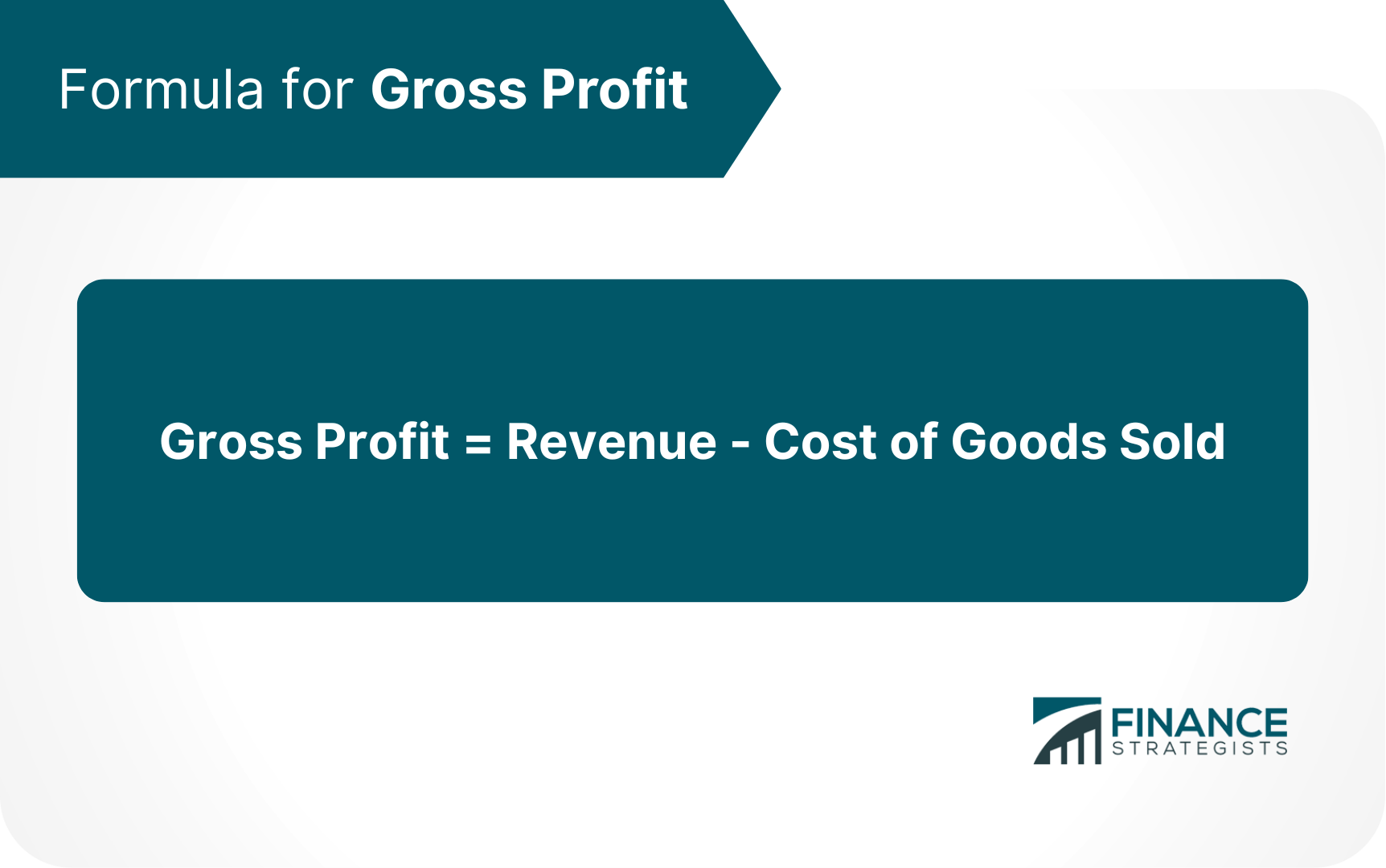
Revenue
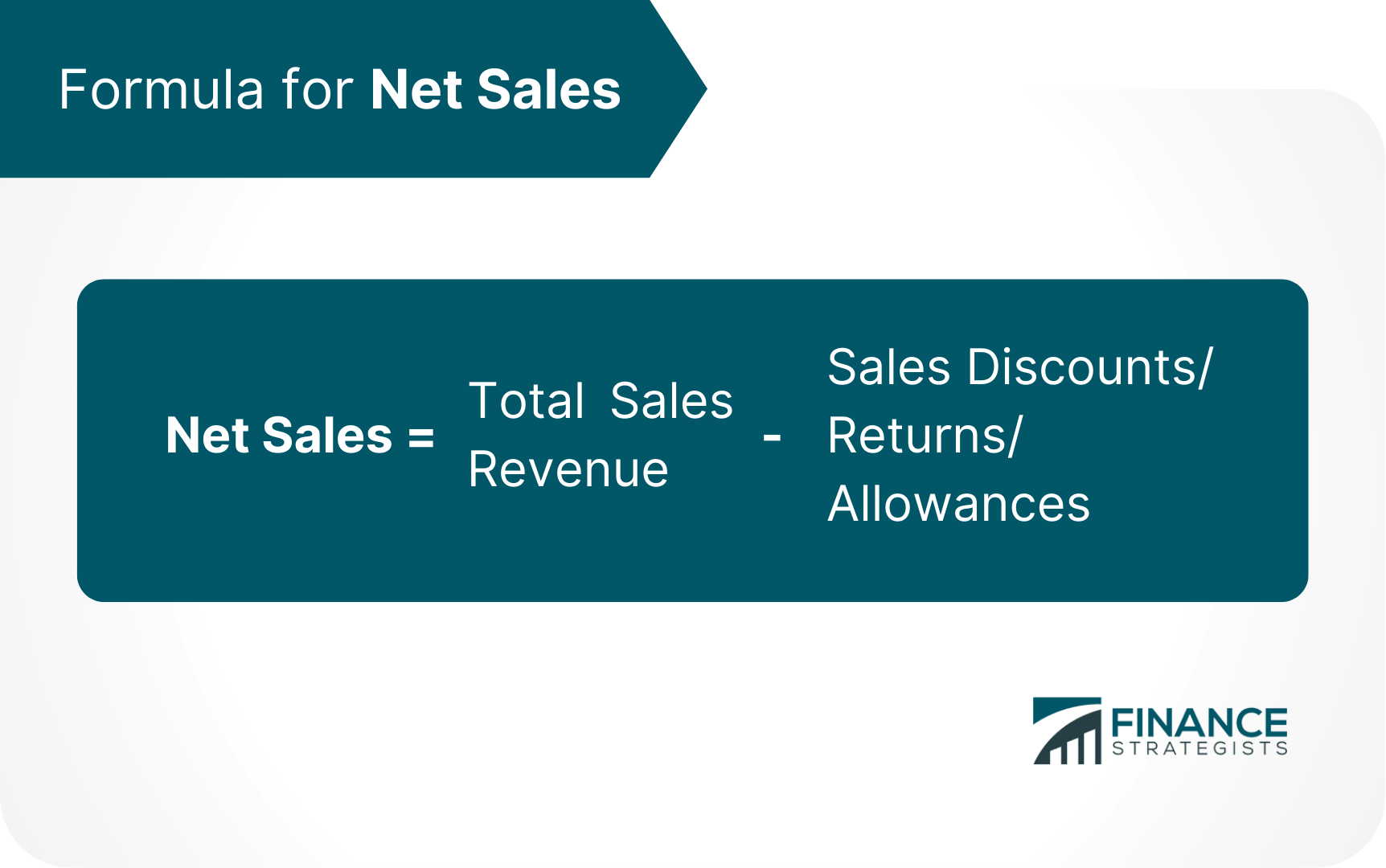
Cost of Goods Sold (COGS)
Example of Gross Profit Calculation
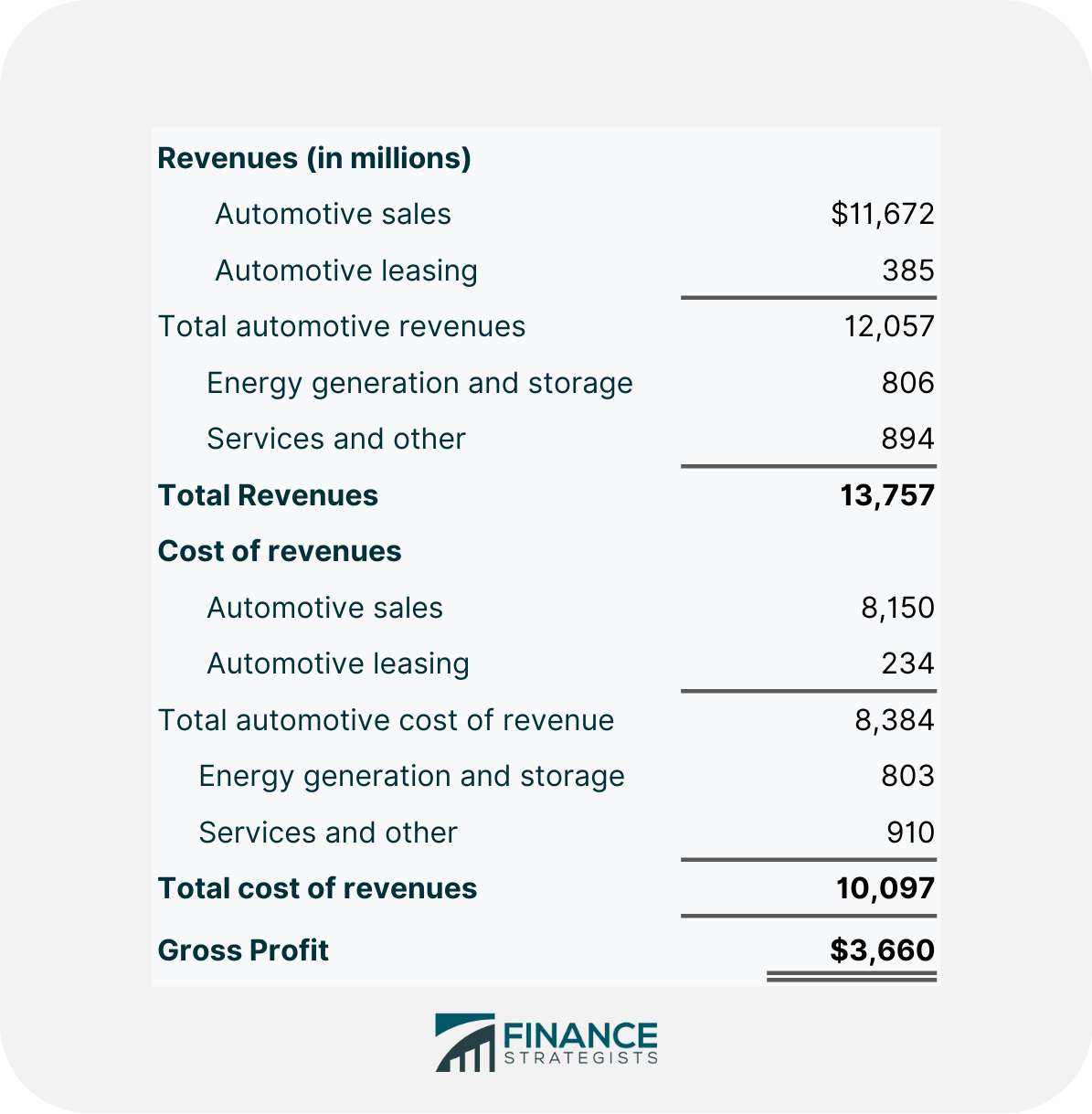
What Gross Profit Can Tell You
Gross Profit vs Gross Profit Margin
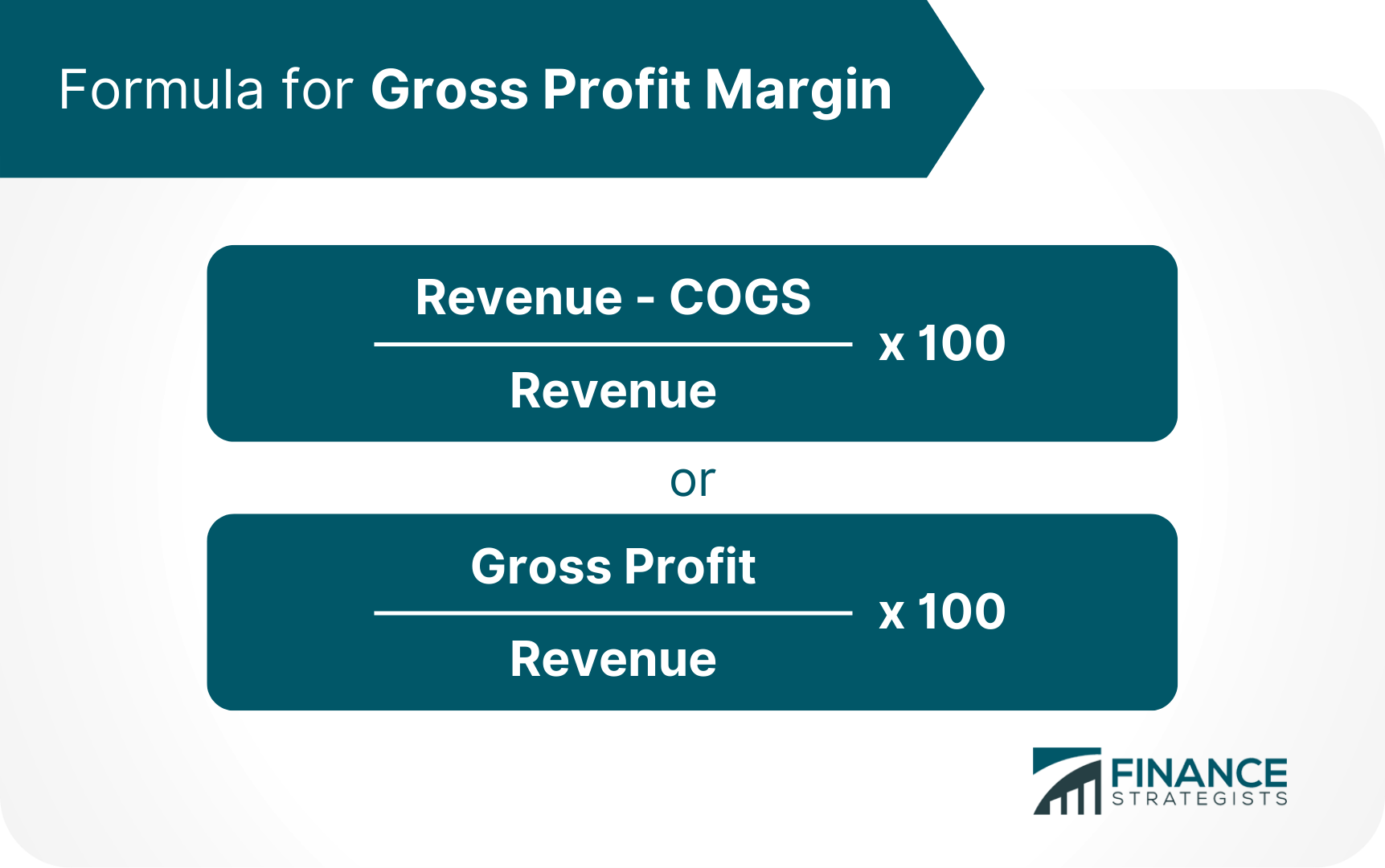
Gross Profit vs Net Income
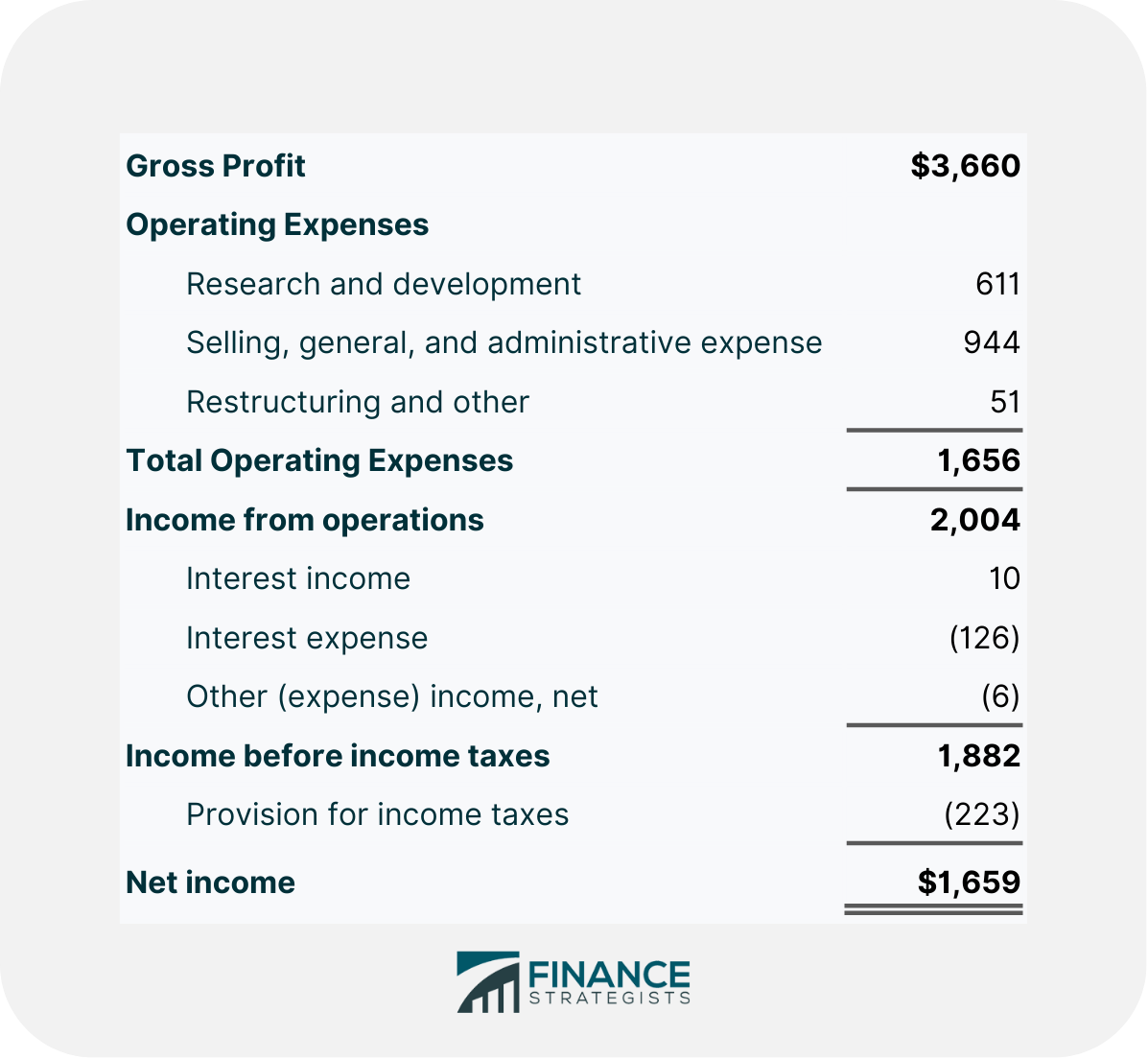
Advantages of Using Gross Profit
Focuses on Product or Service Performance
More Controllable Than Other Aspects of a Company
Limitations of Using Gross Profit
Limited View on the Performance of a Company
Can Be an Insufficient Profitability Metric
Methods to Increase Gross Profit
Price Increase
Cost-Cutting
The Bottom Line
Gross Profit FAQs
Gross profit measures a company's profitability by subtracting the cost of goods sold (COGS) from its sales revenue. It is usually used to assess how efficiently a company manages labor and supplies in production. Gross profit considers variable costs, which vary compared to production output, but does not take fixed costs into account.
To calculate gross profit, subtract the cost of goods sold from the sales revenue.
Gross profit is an important calculation because it allows businesses to track their production efficiency and profitability over time. Gross profit can also compare a company's performance against competitors and help businesses decide on pricing and cost-cutting measures.
The analysis of gross profit helps companies improve their performance. It helps determine how well a company manages its costs and markets its products. A decrease in gross profit may imply a serious problem that needs to be addressed. An increase may indicate that recent changes are working and should be enhanced or continued.
There are a few ways to control gross profit. One way is by increasing prices. Another way is by decreasing costs, such as the cost of labor or raw materials. Additionally, businesses can
True Tamplin is a published author, public speaker, CEO of UpDigital, and founder of Finance Strategists.
True is a Certified Educator in Personal Finance (CEPF®), author of The Handy Financial Ratios Guide, a member of the Society for Advancing Business Editing and Writing, contributes to his financial education site, Finance Strategists, and has spoken to various financial communities such as the CFA Institute, as well as university students like his Alma mater, Biola University, where he received a bachelor of science in business and data analytics.
To learn more about True, visit his personal website or view his author profiles on Amazon, Nasdaq and Forbes.















